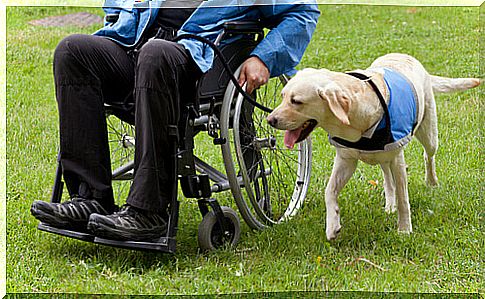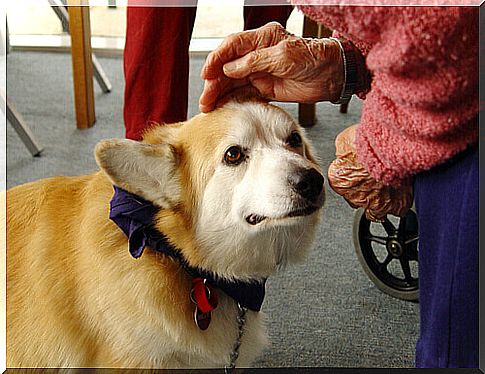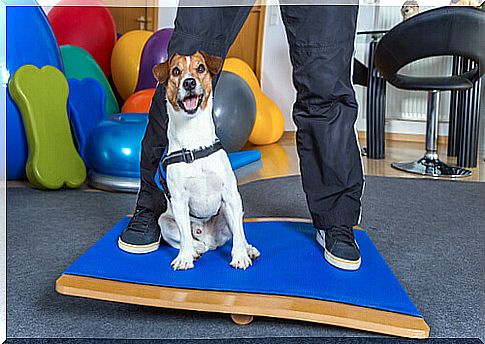Assisted Therapy With Dogs: Here Are The Advantages

Over the years, dogs have earned a leading role in numerous professions, such as police dogs, rescue dogs, assistance dogs and many more. Today we will talk about useful and dignified work done by our four-legged friends. It is about the use of these animals in assisted therapies.
Dogs used in assisted therapy should not be confused with assistance dogs. The latter, in fact, are dogs that live with people with special needs, such as the blind. On the contrary, the dogs used in assisted therapies have a very different role. Before discovering what the advantages are, let’s see together what their role consists of.
The role of dogs in assisted therapies

To begin with, it is good to know that the animals that are used in assisted therapies live together with the therapists, that is, in the centers where they do their work. Their intervention takes place at set times, so they follow the calendar of appointments of people who need therapy.
Dogs are not the only animals used in assisted therapies. In fact, some treatments involve the involvement of dolphins, horses and even fish.
Dogs are the most used animals above all for the simplicity with which they learn the job and for their sixth sense towards man. Man is an extremely complex being, and sometimes to understand us it is necessary to have that little bit more. Furthermore, the presence of a dog gives us peace and tranquility, and this is essential for the success of a therapy.
What are these dogs used for?
The purpose of dogs is to improve cognitive, functional, emotional, physical and social functioning in people. Dogs are used in assisted therapies precisely as a means of creating an environment of peace and relaxation that favors the improvement of the patient.
The benefits of dogs in assisted therapies
The benefits of using dogs in assisted therapies concern 4 areas: psychological, psychomotor, sensory and educational. Let’s go through each of these together and find out how dogs are useful.
Psychological benefits
- They improve the mood. They say that having a happy person next to us fills us with happiness. Who can ever be happier than a dog? A playful animal that will try at all costs to attract our attention and that will make us feel special, thus favoring the improvement of our mood.
- They help improve attention. This effect has been seen mainly in children with attention deficit hyperactivity disorder (ADHA). Having someone at your side who we like, whose attention we seek and who attracts ours, will help us focus on a certain goal.
- They reduce anxiety and stress.
- They promote social and physical contact. It happens that some people have a hard time making contact with other human beings. However, contact with a dog is much easier, and will affect our relationships with other humans in the future as well.
- They favor the stimulation of the mind. Thinking about how to get his attention, how to play with him, will help us keep our minds active.
Psychomotor benefits of assisted therapy
- They improve coordination.
- They improve muscle strength.
- They favor fine motor skills. This is done through gentle gestures such as stroking, leash or feeding him.
Sensory benefits of assisted therapy
- They promote proprioception. It is the ability to perceive the state of contraction of the muscles, as well as one’s position in space and therefore concerns the control of balance and body movements.
- They improve the vestibular system.
- They favor the development of the senses by creating auditory, tactile and visual stimuli.
Educational benefits of assisted therapy

- They foster and improve social activities, also stimulating empathy and generosity.
- They help take responsibility and improve cooperation and teamwork.
- They reduce bad attitudes.
- They help to learn through play.
As we have seen, using dogs in assisted therapies can have great benefits in every sense. We hope to continue to discover many other interesting aspects of our dog friends, so that more and more people become aware of the importance of making them participate in society.









